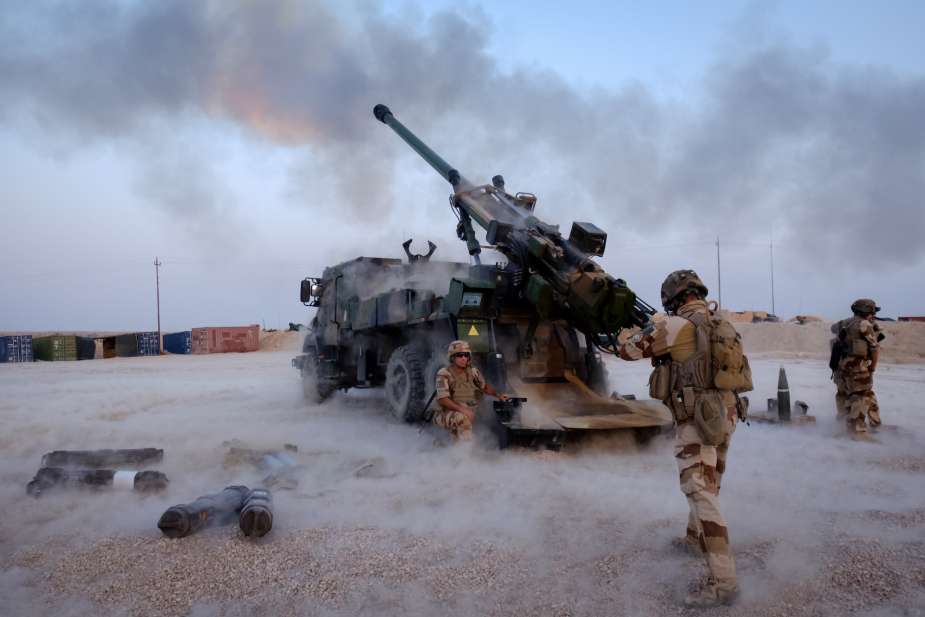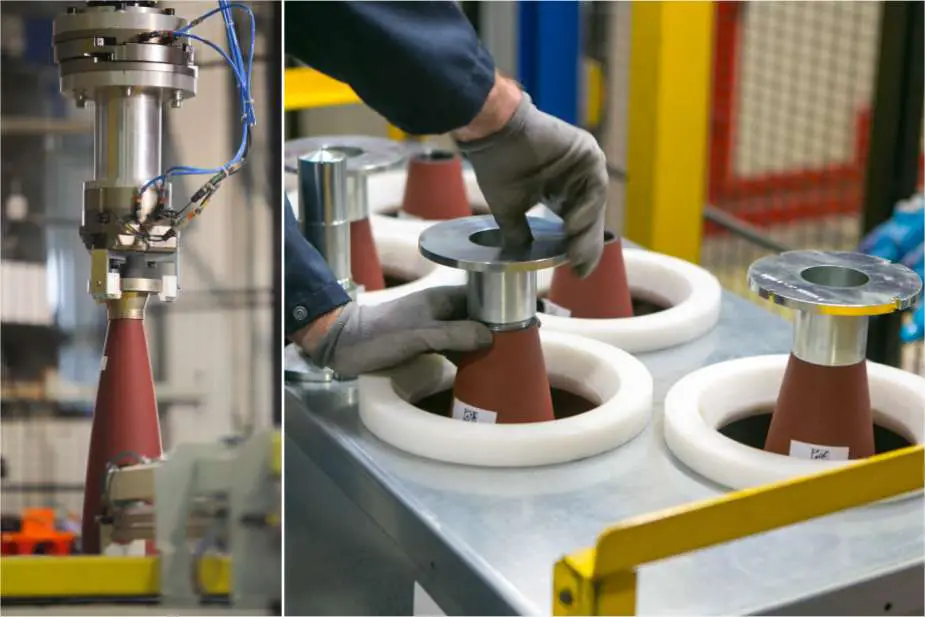Breaking news
France to deliver 80,000 155mm artillery shells to Ukraine.
On March 26, 2024, French Minister of the Armed Forces, Sébastien Lecornu, highlighted the progress of Eurenco's initiative to relocate its powder production to Bergerac, marking an essential step in the resurgence of France's defense industry capabilities. Beginning this year, France plans to produce 100,000 155mm shells through recycling processes, allocating 80,000 for Ukraine and 20,000 for its own military forces.
Follow Army Recognition on Google News at this link

In Bergerac, Eurenco manufactures the modular charges required to propel 155 mm shells from CAESAr self-propelled howitzers, several of which have been supplied to Ukraine. (Picture source: French Army)
The demand for 155mm artillery shells has increased due to ongoing global conflicts, particularly the war in Ukraine, leading to a significant rise in production efforts. For instance, the US Army aims to increase its production from approximately 28,000 shells per month to a goal of around 100,000 shells by October 2025, with an intermediate target of about 75,000 by April 2025, supported by the establishment of new manufacturing facilities employing advanced technologies. The US also plans to escalate its monthly production rate to between 70,000 and 80,000 shells by the end of 2024.
NATO has reacted by placing an order for 220,000 rounds of 155mm artillery ammunition to address the demands arising from conflicts, such as the one in Ukraine, and to replenish stockpiles. European production is also increasing, with companies like Rheinmetall projecting significant growth in their output, aiming for around 600,000 rounds by the end of 2024. Other European countries, including France, are set to expand their production capacities as well.
As reported by L'Usine Nouvelle on March 21, 2024, Eurenco, a powder and explosives manufacturer 100% owned by the French State, plans to double its production of modular charges by 2026, aiming to triple its revenue by 2030. This increase in production is partly in response to the ongoing conflict in Ukraine, which has boosted the demand for 155mm artillery shells, typically requiring five to six modular charges per shell used by the CAESAr self-propelled howitzer. The company's Bergerac site is integral to this plan, tasked with both enhancing modular charge output and starting the production of large-caliber powder. Notably, the Bergerac site produces its own nitrocellulose, a key component in powder production, using a mixture of cellulose from wood or cotton and concentrated nitric acid.
The expansion at the Bergerac site includes investing in automated production lines and operating two production lines continuously, 24/7, which is expected to substantially increase the facility's output to meet the rising demand for 155mm artillery shells. Eurenco operates two automated production lines, one with a capacity of 200,000 units per month and a newer, more advanced robotic line capable of 300,000 units per month, collectively achieving a total capacity five times greater than in 2019. The site's production capabilities have led to a contract with the US Army to establish a similar production facility in Texas, positioning Eurenco in competition against companies such as Nitrochemie, a subsidiary of Rheinmetall. The war in Ukraine has significantly influenced the company's order book, leading to a backlog that extends to 2030, primarily with orders from European countries, particularly Poland.
To address the growing market demand, Eurenco intends to replicate the production model of the Bergerac site across its other facilities in France, Belgium, and Sweden. This includes plans to double the Bergerac site's modular charge production to 1 million units per year by 2026 and to expand the workforce at Bergerac from 300 to approximately 500 employees within the same timeframe. The company has also focused on increasing its self-reliance in production processes, notably by developing a 3D printing technique for filling igniter tubes, aimed at reducing dependency on external supplies and enhancing the efficiency of the production process.
At the Bergerac site, Eurenco plans to construct about fifteen additional buildings for powder production by 2025, with the new facilities expected to produce 1,200 tonnes of large-caliber powder annually, sufficient for 90,000 artillery shells per year. The company has allocated 500 million euros for its expansion over the next three years and has secured a €76 million subsidy from the European Commission under the ASAP program.
The Act in Support of Ammunition Production (ASAP) is a European initiative aimed at increasing ammunition production capacity within Europe, responding to the European Council's directive for the urgent provision of ammunition and missiles to Ukraine and for EU member states to replenish their stocks. The ASAP program seeks to resolve challenges and shortages within the defense supply chains, with projects exceeding a total budget of €500 million across five areas: €124 million for explosives, €248 million for powder, €90 million for shells, €50 million for missiles, and €2 million for testing and reconditioning certification.
Despite these developments, Eurenco remains cautious, as current high demand might decrease, with a strategic plan that includes scalability and a focus on maintaining profitability. This approach includes considerations about the limitations of the Bergerac site, such as available land and skilled labor, prompting efforts to attract engineering talent by establishing new office spaces in Bordeaux.

The expansion at the Bergerac site includes investing in automated production lines and operating two production lines continuously, 24/7, which is expected to substantially increase the facility's output to meet the rising demand for 155mm artillery shells. (Picture source: Eurenco)

























